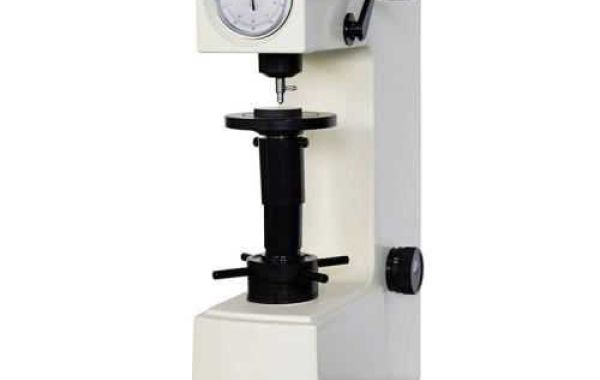Maintaining your Rockwell hardness tester is not only a good idea, but it's also essential to getting accurate results, extending its life, and avoiding possible risks to your safety and financial stability. Making routine maintenance a top priority will help you make sure your tester operates well and produces reliable, accurate data. Here are some key steps to proper maintenance:
Regular Cleaning:
- Daily cleaning: Use a clean, dry cloth to wipe down the tester after use to get rid of any dirt, debris, or oil that might have accumulated on the indenter, anvil, or other parts.
- Periodic cleaning: Depending on usage, more thorough cleaning is advised regularly. To eliminate stubborn dirt and guarantee correct part movement, use a non-abrasive cleaning solution and a soft brush.
Lubrication:
- Follow manufacturer's instructions: There might be recommended lubricants and specific lubrication points for each model. For information on the right lubricant and how often to apply it, refer to the handbook.
- Lubricate sparingly: Apply lubricant sparingly and only when necessary to avoid drawing dust and debris in.
Calibration:
- Regular calibration: Set up a routine calibration appointment for the tester with a certified technician, preferably once a year at the latest, or more frequently for heavy usage. In addition to meeting industry standards, this guarantees accurate readings.
- Use reference blocks: Continually check the tester's accuracy with reference blocks of known hardness. To guarantee consistency, this can be carried out both before and after calibration.
Preventative Maintenance:
- Inspect regularly: Examine the tester visually for any indications of wear, damage, or malfunction. Look for worn-out components, loose screws, and any movement irregularities.
- Store properly: Store the tester in a dust-free, dry, and clean environment when not in use. Steer clear of extremely high or low humidity levels.
- Follow safety precautions: Wearing the proper protective gear, such as gloves and glasses, is imperative when handling testers and carrying out maintenance duties.
Additional Tips:
- Use proper test specimens: Make sure the test specimens are sanitized, level, and in the right thickness according to the selected test scale.
- Avoid overloading: Make sure not to surpass the tester's maximum load capacity. This may harm the device and reduce precision.
- Handle with care: Steer clear of dropping or bumping the tester as this may compromise its accuracy and calibration.
You can guarantee the accuracy, longevity, and peak performance of your Rockwell hardness tester for many years to come by adhering to these maintenance procedures. Recall that appropriate upkeep is an investment that guarantees the consistency of your outcomes while saving time and money.








